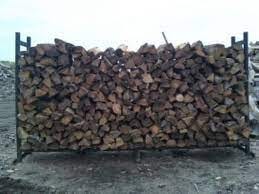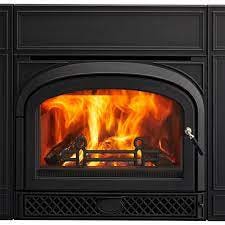Tales from a Blogger on Logging
the life of a woodsman...
It’s an activity mixed with dread and pleasure. I suit up in my work jeans, hoodie, insulated gloves, and big clomping work boots, then turn the handle of my kitchen door, head out into the north yard of my Vermont home, and breathe in the winter air. My nose runs for the first ten minutes, and my hands get slightly cold, but I soon adapt. I go from a smartphone Westerner to a Green Mountain woodsman.
I’ve looked enviously at YouTube videos of woodsmen who take a sharp axe and cleave a log into useful sections with one blow. That’s not me. I set up my folding chair before my Home Depot electric log splitter and hope for the best. Logs are like a man’s tie. Each tie has a learning period where you get to know it. You tie it the first time, and the knot isn’t tight, or the one length is longer than it should be. Try several more times, and you are let into the knowledge of that tie - where to crossover the ends and wrap the knot correctly so it is centered under your shirt collar. Each tie is unique, as is each wood log. I approach a log as a stranger. Lay it onto the splitter platform, orient it so that it should hit the wedge precisely and split cleanly. Turn on the splitter switches (a two-hand operation for safety purposes) and watch the log move towards the wedge and – it splinters, but sloppily, and you have to manually tear it apart, watching the wood strands peel away from each side. Other logs pop cleanly apart, with a satisfying clean “C-R-A-C-K.” Occasionally, a piece of the split log decides to fly into my kneecap, and I mutter the indecipherable language of lightning pain.
Throwing the split wood into a pile has its own joy. The pile of unsplit wood diminishes, and the split wood grows, its inner strands naked, ready to embrace a flame. Then there’s the stacking of the wood into my metal racks. The first course of horizontally laid logs seems puny in the empty rack, but patience and persistence soon fill the rack, and when I slap the top of the pile, I’m rewarded with a satisfying thump of tightly packed wood just waiting to heat my home.
There’s a smaller, subsidiary, hooped log holder under the porch roof, and there’s the regular dance of picking up a bundle of split wood, bringing it into the house next to my wood stove insert, and then refilling the outside log holder from the aforementioned metal racks. When I pile the split wood into my outstretched left arm, I am amazed at how much my senior muscles can hold (and passing dogs, children, and beautiful women are equally impressed).
I planned on splitting and stacking wood for five hours, but after one hour, I decided my fingers had gotten cold enough, so I head into the house to build a fire that will blaze from the afternoon into the late night. I’m an advocate for the top-down method of fire building, where the kindling is placed on top of the piled wood and lit, its flames descending to burn the wood below. Few fires don’t require a little encouragement and nursing, but once caught, I seal the stove door with a satisfying turn of the iron handle and watch as the wood gives itself up to flames and heat.
Watching the fire is mesmerizing, and an inner voice soon tells me that ten minutes have passed and there must be something better to do with my time.
Picking wood debris from my jeans, I have a lovely cup of tea and understand the lure of the logger’s life, and I imagine myself exploring the Green Mountain forests, looking for that next sacrificial tree for felling. The reality is finding the number for the firewood company in the Spring and ordering a few more cords for next winter’s needs.





This story gave me both a good laugh and a bit of heebee-jeebees, remembering our 25 years of heating our houses with wood. I've never heard of top-down kindling fire starting though. That's a new one. Glad it worked for you. My husband and I had different ways of laying a bed of newspaper as tinder. I'd wad up pages and he would tear strips and shake them to open them up. I would set and burn fires everyday. Since he commuted long distance for work and only came home on weekends, he thought he was the master of fires. How in the world did I survive without him. Guess who's fires caught easily? And guess who cleaned out the wood stove and chimney every year?